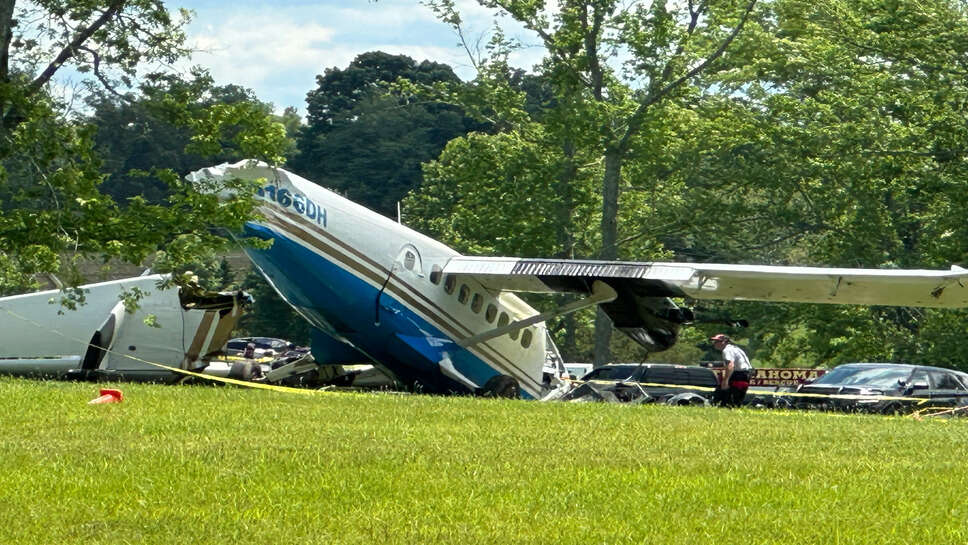Skydiving Plane Crash in Tennessee: 20 Onboard Survive Despite Crash Landing

On June 8, 2025, a skydiving plane carrying 20 passengers crashed shortly after takeoff from Tullahoma Regional Airport in Coffee County, Tennessee. The aircraft, a de Havilland Canada DHC-6 Twin Otter, experienced an unexpected malfunction that led to the crash in a wooded area near Old Shelbyville Road. Despite the severity of the incident, miraculously no lives were lost. Several passengers suffered injuries, with four requiring hospitalization, but the majority escaped with minor or no injuries.
The Incident and Immediate Response
The plane took off around midday and shortly after departure encountered a problem, forcing the pilot to attempt an emergency landing. Eyewitnesses reported seeing the plane lose altitude rapidly before it collided with trees and the terrain. The impact caused significant damage to the aircraft's fuselage and wings, leaving the plane severely compromised.
Emergency services were quick to respond. Local fire, police, and medical personnel arrived at the scene within minutes to assist the survivors and secure the crash site. Passengers were evacuated, and those injured were transported to nearby hospitals for further care. One individual was reported to be in critical condition, while the others were stable. First responders treated several passengers on-site for minor injuries such as cuts, bruises, and shock.
Authorities immediately cordoned off the area to prevent bystanders from approaching the dangerous wreckage. Investigation teams from the Federal Aviation Administration (FAA) and the National Transportation Safety Board (NTSB) began a detailed examination of the site to uncover the cause of the crash.
About the Aircraft and Skydiving Operations
The de Havilland Canada DHC-6 Twin Otter is a twin-engine turboprop widely used in the skydiving industry due to its reliability and ability to operate from short runways. Its spacious cabin allows for accommodating multiple skydivers along with their gear.
The operator of the aircraft was Randigo Aviation, a company specializing in skydiving services. These types of flights typically involve taking groups of skydivers to jump altitude, often with rapid turnarounds to maximize the number of jumps per day. While skydiving itself carries inherent risks, the aviation side of operations follows strict regulatory standards and safety checks to minimize accidents.
This incident is a reminder that even with experienced pilots and well-maintained aircraft, unexpected technical issues or external factors can lead to emergencies. The thorough investigation underway will focus on mechanical aspects, pilot actions, weather conditions, and other possible contributing factors.
The Human Side: Passengers and Community Response
Among the 20 onboard were experienced skydivers and several first-time jumpers. Many passengers expressed shock and gratitude after surviving the crash. The quick and professional response of the pilot and emergency teams played a crucial role in preventing fatalities.
Local residents and the wider Tennessee community have shown support and relief that the tragedy was not worse. Officials praised the bravery of the first responders and emergency personnel who worked tirelessly under challenging conditions to provide medical care and secure the crash area.
The aviation community is also rallying to provide assistance and counseling to the survivors and their families. Skydiving organizations have emphasized the importance of safety protocols and continuous training to prevent future incidents.
Safety and Investigation Outlook
The FAA and NTSB have launched a formal investigation to determine the exact cause of the crash. Such probes typically involve examining flight data recorders if available, pilot interviews, maintenance records, and a detailed inspection of the wreckage.
Initial reports indicated an “unknown issue” with the plane shortly after takeoff, but investigators will look at a wide range of possibilities including mechanical failure, pilot error, weather interference, or a combination of factors.
While the crash highlights risks associated with small aircraft and adventure sports, experts emphasize that such incidents are rare relative to the volume of safe skydiving flights conducted every year.
The investigation’s findings will be vital in recommending safety improvements, whether related to aircraft maintenance, pilot training, or operational procedures. The aviation industry continually evolves by learning from incidents to enhance safety for all passengers.
Broader Implications and Awareness
This crash is a sobering reminder of the unpredictability of aviation and the importance of emergency preparedness. Skydiving remains a thrilling and popular sport worldwide, attracting adrenaline seekers from all walks of life.
Operators must maintain rigorous maintenance schedules and adhere to stringent safety regulations. Pilots and crew should regularly update their training to handle emergencies confidently and efficiently.
Passengers too should be aware of safety briefings, understand emergency procedures, and follow crew instructions carefully to increase their chances of survival in case of accidents.
The survival of all 20 onboard the Tennessee crash is a testament to effective safety measures, quick emergency response, and perhaps an element of luck. It also underscores the resilience of human beings in the face of sudden crises.
The skydiving plane crash near Tullahoma Regional Airport is a serious incident that thankfully did not result in loss of life. The emergency landing and subsequent crash caused injuries, but the professional response of the pilot, crew, and first responders ensured the safety of the passengers.
As investigations continue, the aviation and skydiving communities await answers that will help prevent future accidents. Meanwhile, the incident serves as a poignant example of the risks involved in adventure sports and the critical role of safety protocols.
The Tennessee community’s relief at the absence of fatalities is profound, and ongoing support for the injured and their families remains a priority. This event will likely reinforce commitment to safety excellence in skydiving operations and aviation at large.
